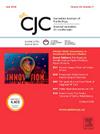Clinical Outcomes of Patients With Bicuspid Aortic Valve Undergoing a Targeted Transcatheter Aortic Valve Replacement Approach: The LIRA Method
IF 5.8
2区 医学
Q1 CARDIAC & CARDIOVASCULAR SYSTEMS
引用次数: 0
Abstract
Background
Transcatheter aortic valve replacement (TAVR) in patients with bicuspid aortic valve (BAV) disease is still burdened by a non-negligible rate of stroke and permanent pacemaker implantation (PPI). These suboptimal results, possibly related to the unique BAV anatomy, may suggest the use of a different sizing method in this setting. The aim of our study is to evaluate whether the application of the supra-annular LIRA method may improve clinical outcomes in this population.
Methods
In this single-center retrospective study, we enrolled consecutive patients with severe aortic stenosis and raphe-type BAV undergone TAVR with the implantation of supra-annular self-expanding prostheses sized according to the LIRA method. The primary endpoint was the device success. Secondary endpoints were in-hospital and 30-day safety outcomes and 1-year clinical efficacy. All study endpoints were adjudicated according to the Valve Academic Research Consortium 3 criteria.
Results
A total of 104 patients (mean age, 79.8 ± 5.83 years) were enrolled in our study. The mean Society of Thoracic Surgeons score was 4.96 ± 4.73%. Use of the LIRA method led to prosthesis downsizing in 85.6% of patients. Device success was 94.2%. All-cause death was 0%, conversion to surgery was 0%, and an extremely low rate of stroke (1.9%) and PPI (9.6%) was observed. The intended performance of the valve was attained in 96.1% of patients and it was maintained at 1-year follow-up. Clinical efficacy at 1 year was reached in 90.6% of patients.
Conclusions
The LIRA method represents an alternative option for prosthesis sizing in patients with type 1 and type 2 BAV undergoing TAVR with promising early and midterm outcomes.
经导管主动脉瓣置换术治疗双尖瓣患者的临床疗效:LIRA方法
背景:经导管主动脉瓣置换术(TAVR)在二尖瓣主动脉瓣(BAV)疾病患者中的应用仍存在不可忽视的中风率和永久起搏器植入率(PPI)。这些不理想的结果可能与 BAV 独特的解剖结构有关,因此可能建议在这种情况下使用不同的尺寸测量方法。我们的研究旨在评估应用环上 LIRA 方法是否能改善这一人群的临床预后:在这项单中心回顾性研究中,我们连续招募了重度主动脉瓣狭窄和剑突型 BAV 患者,根据 LIRA 法植入了环上自扩张假体,进行了 TAVR 手术。主要终点是设备成功率。次要终点是院内和30天的安全性结果以及1年的临床疗效。所有研究终点均根据 VARC 3 标准进行判定:共有 104 名患者(平均年龄为 79.8±5.83 岁)参与了研究。平均 STS 得分为 4.96±4.73%。85.6%的患者通过使用LIRA方法缩小了假体尺寸。装置成功率为 94.2%。全因死亡为 0%,转为手术为 0%,中风(1.9%)和 PPI(9.6%)发生率极低。瓣膜的预期性能为96.1%,并在1年的随访中保持不变。90.6%的患者在1年后达到了临床疗效:结论:LIRA方法是对接受TAVR的1型和2型BAV患者进行假体尺寸选择的一种替代方案,具有良好的早期和中期疗效。
本文章由计算机程序翻译,如有差异,请以英文原文为准。
求助全文
约1分钟内获得全文
求助全文
来源期刊

Canadian Journal of Cardiology
医学-心血管系统
CiteScore
9.20
自引率
8.10%
发文量
546
审稿时长
32 days
期刊介绍:
The Canadian Journal of Cardiology (CJC) is the official journal of the Canadian Cardiovascular Society (CCS). The CJC is a vehicle for the international dissemination of new knowledge in cardiology and cardiovascular science, particularly serving as the major venue for Canadian cardiovascular medicine.
 求助内容:
求助内容: 应助结果提醒方式:
应助结果提醒方式:


